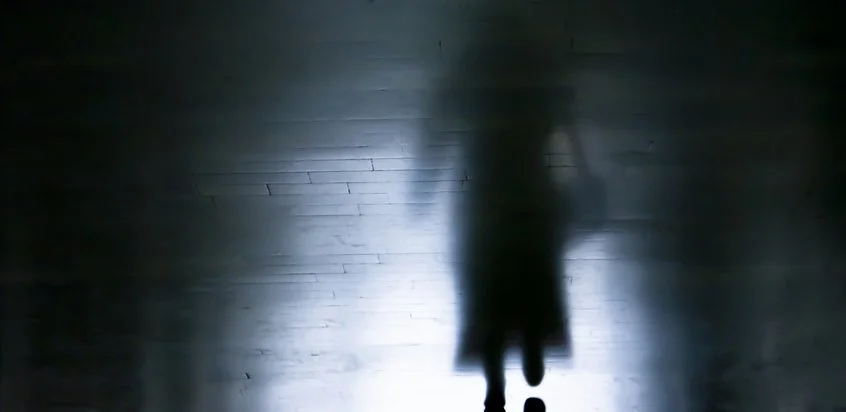Why Starting with the Heart Feels Safer Than Diving into Body Trauma
By: Joy Stephenson-Laws, Holistic Coach, J.D., Founder
Can we talk about something vulnerable for a minute?
You know how everyone's saying "the body keeps the score" and "you need to get into your body to heal"? And maybe you've tried. Maybe you've sat in therapy, and someone asked you to notice what you feel in your body, and you just... panicked a little?
Or maybe you went to a yoga class, and the teacher said "scan your body," and suddenly you felt like you were drowning. Like there was too much sensation, too much memory, too much everything trapped in there.
Here's what I want you to know: You're not failing at healing. You're not "too damaged" for body work. You might just need a gentler doorway in.
And that doorway? It might just be your heart.
Why "Just Feel Your Body" Can Feel Like Too Much
Let's get real about why body-based healing can feel terrifying for trauma survivors.
When trauma happens, your body remembers. Not in words or stories, but in tension patterns, in bracing, in places that went numb to survive. Your shoulders might hold the weight of hypervigilance. Your belly might store years of fear. Your hips might have locked down feelings you couldn't safely express.
So when someone says "just tune into your body," it can feel like walking into a haunted house where all the ghosts wake up at once.
What happens when we dive in too fast:
Old panic responses activate.
Dissociation kicks in (floating away, going numb).
Overwhelm floods the system.
The body says "NOPE" and shuts down.
You end up more disconnected than before.
This isn't weakness. It's wisdom. Your system is trying to protect you from too much, too fast.
Enter the Heart: Your Body's Safe Zone
But here's the beautiful thing about the heart — it's different from other parts of your body.
Think about it. Your heart has been with you through everything, and it kept beating. Through the worst moments, through the fear, through the grief. Beat, beat, beat. It never abandoned you.
And unlike your clenched jaw or tight shoulders or numb legs, your heart usually isn't where trauma gets "stuck." It's more like... trauma moves through it.
Why the heart feels safer:
It's always in motion (not frozen or locked).
We associate it with good things too (love, joy, puppies).
It's familiar territory (we all know heartache and heart-happiness).
It naturally wants to regulate and find rhythm.
It's central but not usually traumatized tissue.
Your heart is like the living room of your body — a neutral, communal space. Not the basement where the scary stuff is stored. Not the attic full of dusty memories. Just... the living room, where you can sit and breathe and be.
The Science of Why This Works
Okay, I know some of you are thinking, "This sounds nice, but is it real?"
Yes. It's very real.
Your heart has over 40,000 neurons. It literally has its own nervous system. Scientists call it the "heart brain," and it sends more signals to your head brain than the other way around.
When your heart rhythm is chaotic (from stress, trauma, fear), it sends "danger" signals to your brain. But when your heart rhythm is coherent — steady and smooth — it tells your entire system: "We're safe now."
Heart Rate Variability (HRV) is actually one of the best measures of nervous system health and resilience. People with unresolved trauma often have low HRV. But here's the hopeful part: you can improve it with simple heart-focused practices.
In other words, starting with your heart isn't just emotionally wise — it's physiologically smart.
What Heart-Centered Healing Actually Looks Like
So what does it mean to "start with the heart"? It's gentler than you might think.
Simple practices that work:
Hand on Heart
Literally just place your hand on your heart.
Feel the warmth, the rhythm.
No need to change anything.
This activates the care system in your brain.
Heart Breathing
Breathe normally but imagine breathing through your heart.
Maybe 5 seconds in, 5 seconds out.
Nothing forced, just steady.
Like rocking a baby to sleep.
Heart Qualities
Think of something that brings a warm feeling (pet, sunset, kind friend).
Let that feeling hang out in your heart area.
Not forcing gratitude, just allowing warmth.
Even 10 seconds counts.
Heart Coherence
Apps like HeartMath can show your heart rhythms.
Watch your heart find its groove.
It's biofeedback that doesn't require diving into trauma.
None of these require you to scan your whole body or sit with difficult sensations. You're just... visiting your heart. Saying hello to the part of you that never stopped fighting for your life.
Building Your Foundation Before Going Deeper
Here's what starting with your heart gives you:
A stable home base. When deeper body work feels overwhelming, you can always return to your heart. Hand on heart. Breath in the heart. You're okay.
Practice with sensation. You learn to feel something in your body (heartbeat) that isn't threatening. This builds tolerance for other sensations later.
Nervous system regulation. Heart coherence literally calms your entire system. You're building resilience for bigger work.
Self-compassion. The heart is where we feel kindness. Starting here means approaching your healing with gentleness, not force.
Think of it like learning to swim. You don't start in the ocean. You start in the shallow end, where you can touch the bottom. Your heart is the shallow end of somatic work.
When You're Ready for More (Or Not)
Starting with your heart doesn't mean you'll never work with the rest of your body. But it means when you do, you'll have:
Tools to regulate when things get intense.
A safe place to return to.
Evidence that feeling your body won't destroy you.
A foundation of self-compassion.
And honestly? Some people find that heart-centered work is enough. That learning to live from their heart, to trust their heart's wisdom, to let their heart lead — that IS their healing.
There's no hierarchy here. Deeper isn't better. More intense isn't more healing. Your healing is your healing.
Permission to Start Small
If you've been feeling like you're supposed to dive into the deep end of body work but can't seem to make yourself do it, here's your permission slip:
You can start with your heart.
You can take it slow.
You can build safety first.
You can trust your own pace.
Your heart has been waiting for you all along. It's been keeping the rhythm of your life, holding space for when you're ready. And whether that's today, next month, or next year — your heart will still be there, beating patiently, ready to welcome you home.
Because healing doesn't have to be a battle. Sometimes it's just a hand on your heart, saying, "I'm here. We survived. And we're going to be okay."
Start there. The rest will follow when it's time.
Resources for Heart-Centered Healing
Books:
The HeartMath Solution by Doc Childre and Howard Martin
Healing Trauma by Peter Levine (especially the heart-focused exercises)
The Body Keeps the Score by Bessel van der Kolk (Chapter 16 on HRV)
Self-Compassion by Kristin Neff
Practices & Apps:
HeartMath Inner Balance - Biofeedback for heart coherence
Insight Timer - Heart-centered meditations
Ten Percent Happier - Loving-kindness practices
Research & Learning:
HeartMath Institute (heartmath.org)
Polyvagal Institute resources on heart regulation
Stephen Porges' work on the Social Engagement System
Finding Support:
Look for therapists trained in "heart-centered therapy"
Hakomi practitioners often start with the heart
Somatic Experiencing practitioners who emphasize titration
Trauma-sensitive yoga teachers who offer modifications
Remember: There's no rush. Your heart has kept faith with you through everything. You can keep faith with it by going slow.







